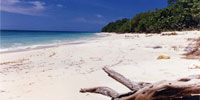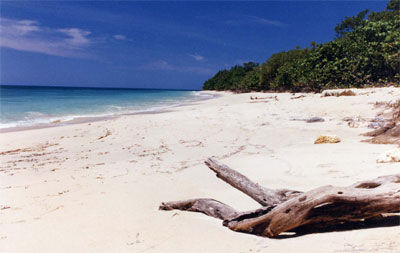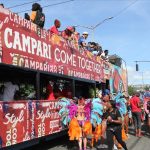
Located within the parish of St. Elizabeth, Treasure Beach is well-regarded across Jamaica as having the friendliest, hardest working people on the island, as is declared on their welcoming sign outside of parish limits: “In this parish, we work, not shirk.” The islanders seem to have inherited their work ethic from the generations of fishermen and farmers who lived before them. This sense of pride in their work and heritage allows Treasure Beach natives to welcome visitors to their island.
The first residents of Treasure Beach were the Tainos Indians who came to Jamaica around 700 AD. The Tainos were small people, averaging five feet in height. One fascinating and somewhat disturbing fact about the Tainos was that they felt a pointed skull was something to be proud of, so to achieve this feature, they used to bind up a baby’s head using two wooden boards on either side to ensure the desired results. Peaceful people who lived non-materialistic lives, the Tainos believed in community living in a society in which women gathered the food and men served as fishers and hunters. Pottery, carving, weaving, boatbuilding, fishing, and farming were among their trades. You can still find bits and pieces of Tainos pottery among meadows, especially after a rainfall. The Tainos’ existence ended when they were captured and enslaved by the Spanish. Most Tainos died while enslaved, but some were able to escape in boats and made it to parts of the Americas (including south Florida) where small Taino communities are still found today. Some words in the English language have been borrowed from the Taino: canoe, hammock, hurricane and tobacco.
Another part of the colorful history of the people of treasure beach is the tale of the Scottish ship that sank offshore of the island during the 1600s. Survivors swam to shore and made their home on the island—when these shipwrecked citizens intermingled with the natives, a rainbow of people were created, with lighter skin, blue and green eyes, and red and blonde hair. Today, these people are known as “brownin’s” or “red men”
Like the people, the landscape of Treasure Beach is also distinct. Known as the desert coast of Jamaica due the lack of rainfall the area receives, some visitors liken the area to the savannahs of East Africa. As you near Treasure Beach, the Santa Cruz Mountains fade into the coastline and flat plains with fields of low scrub grass, a variety of cacti (some reaching several feet tall), acacia trees, and lignum vitae trees become more abundant. Of particular interest are the lignum vitae, found in few locations around the world (and only on the south coast in Jamaica). These rare trees can only survive in dry, arid climates—its small purple blossom serves as Jamaica’s national flower, and many people use the tree’s leaf to rub on cuts and insect bites.
Fishing is the major industry in Treasure Beach. Longtime residents will be able to tell you stories of several generations of fishermen dating back 200 years. Modern fishermen still use seine nets and traps to practice their trade, but their vessels have changed from wooden “dugout canoes” (which were carved out of cottonwood) to cottonwood and fiberglass boats powered by 40 HP engines. A good number of the local fishermen make their living on the Cays, a group of small sand spit islands located 60 miles off Jamaica’s South Coast. These fishermen come home only to visit their families a few days a year. At the end of the days, when boats come in, locals crowd around to check out the day’s activity. Treasure Beach natives encourage you to join in by observing the colorful fish, lobsters and crabs being unloaded, weighed, sorted, iced and sent out in trucks for sale across the island. If you talk to the fishermen directly, you may even be able to take some home for dinner!
Second to fishing, farming is the area’s next biggest industry. In fact, St. Elizabeth is nicknamed “The Bread Basket of Jamaica” because they supply the Island with more grains than any other area. Because farming is an important business here, farm stands are available in which famous “donkey ladies,” vegetable trucks, and farm stands sell fresh produce everyday.










